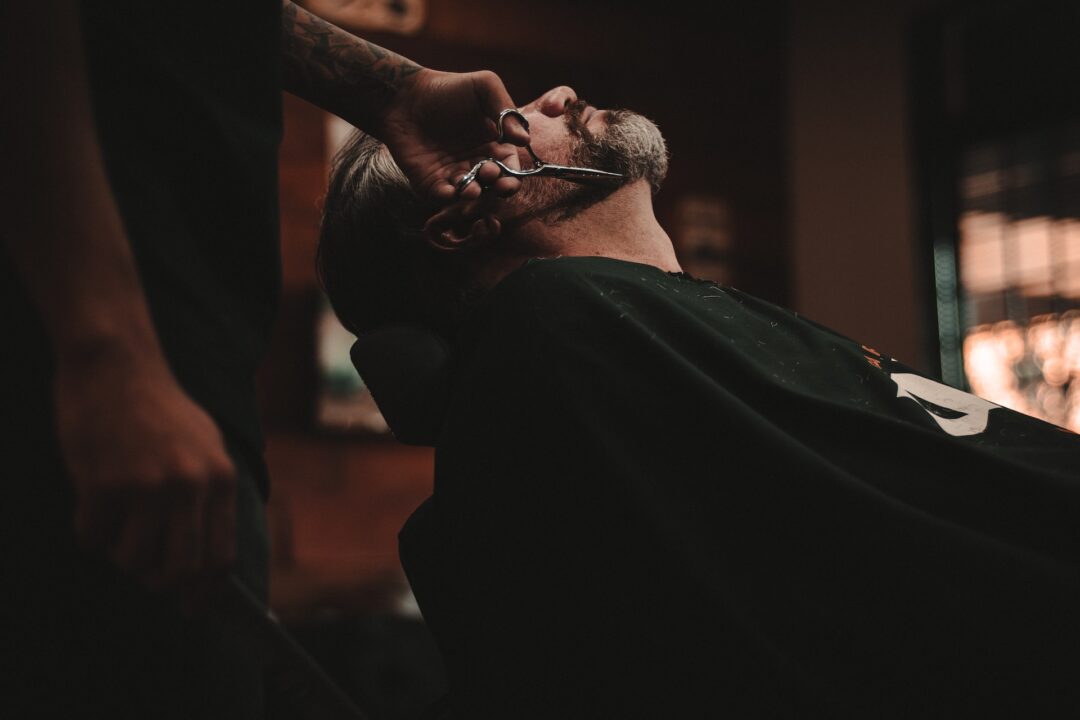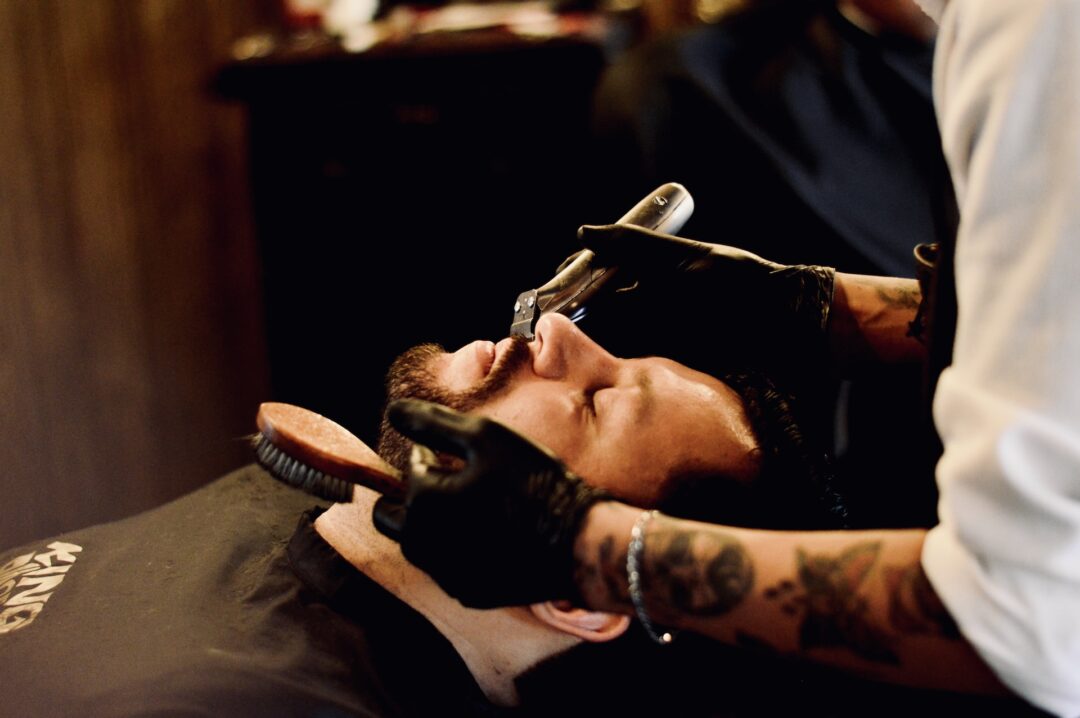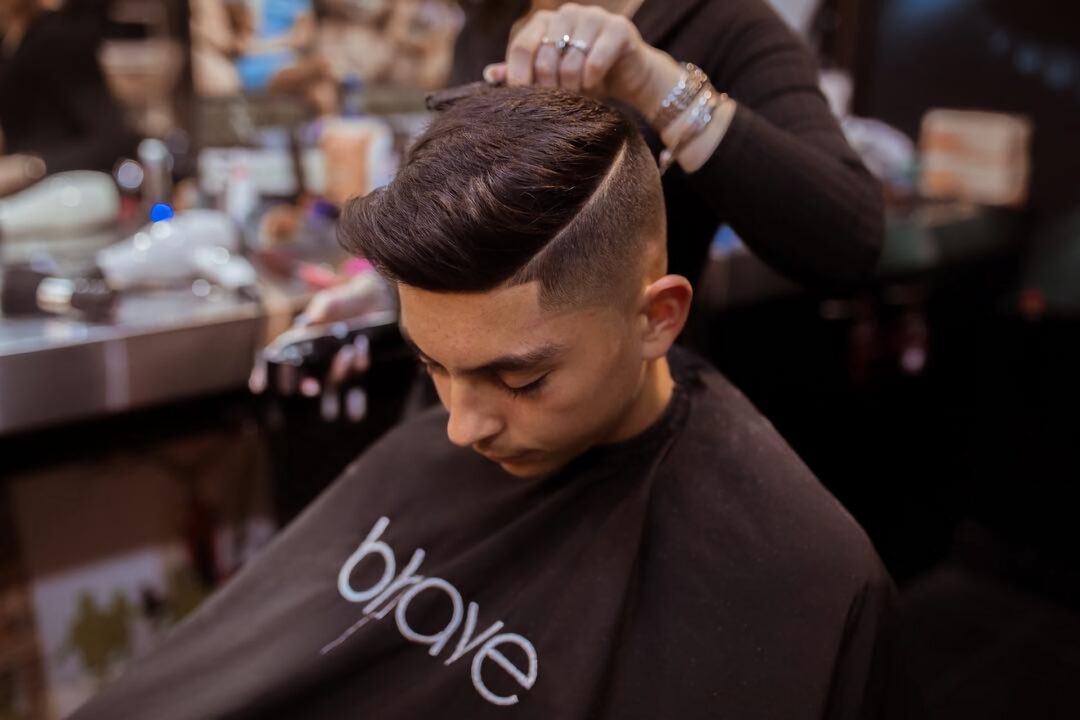Having a full, thick beard has been a sign of manhood and maturity for generations, but not every man is born with that privilege. Whether you’re just starting out or have been growing your beard for some time, you’ve certainly wondered what you can do to make it fuller. In this article, we’ll explore the fascinating topic of beards in detail, giving you insider tips on how to develop a fuller, thicker beard.
Understanding the Science of Beard Growth
Hormones and the hair-growth cycle, among other things, play a role in this intriguing and complicated biological process. In this detailed manual, we’ll examine the biology of beard development, paying special attention to the hormones testosterone and dihydrotestosterone (DHT) and the stages of the hair growth cycle.
Testosterone and Dihydrotestosterone (DHT)
Hormones like testosterone and dihydrotestosterone (DHT) have a significant role in the maturation of male auxiliary sexual features like beard and mustache growth. Specifically, their functions in facial hair development are as follows:
| Hormone | Role in Beard Growth |
| Testosterone | – Essential for the initiation of beard growth. |
| – Promotes the development of facial hair follicles during puberty. | |
| – Higher levels of testosterone can lead to increased beard growth, but it is not the sole determining factor for a thick beard. | |
| Dihydrotestosterone | – Derived from testosterone through the action of 5-alpha-reductase enzyme. |
| – More potent than testosterone in promoting beard growth. | |
| – Responsible for the transformation of vellus (thin, non-pigmented) facial hair into terminal (thicker, pigmented) hair. |
Beard thickness isn’t necessarily correlated with these hormone levels, so that’s something to keep in mind. Beard density and style also depend substantially on genetic factors. However, these hormones are fundamental in kicking off and sustaining beard development.
Balancing Testosterone and DHT for Optimal Beard Growth
Beard growth requires the hormones testosterone and dihydrotestosterone (DHT), yet problems like thin or patchy beards can result from testosterone and DHT abnormalities. The key to healthy beard development is finding that sweet spot. Here are a few approaches to think about:
- Diet and Nutrition: Healthy hormone levels can be supported by eating a balanced diet rich in vitamins and minerals like biotin and zinc;
- Exercise: Being physically active on a regular basis has been shown to promote beard development by normalizing hormone levels and increasing blood flow;
- Stress Management: Hormone imbalances may be brought on by excessive stress. Meditation and other stress-reduction practices can be useful;
- Avoiding Overuse of Facial Hair Products: When used excessively, items like beard oils and shampoos can upset the skin’s and hair’s delicate oil balance, leading to unwanted side effects;
- Consultation with a Healthcare Professional: A doctor will be able to do tests and offer treatment advice if you suspect a hormone imbalance.
Beard thickness isn’t necessarily correlated with these hormone levels, so that’s something to keep in mind. Beard density and style also depend substantially on genetic factors. However, these hormones are fundamental in kicking off and sustaining beard development.
Balancing Testosterone and DHT for Optimal Beard Growth
Beard growth requires the hormones testosterone and dihydrotestosterone (DHT), yet problems like thin or patchy beards can result from testosterone and DHT abnormalities. The key to healthy beard development is finding that sweet spot. Here are a few approaches to think about:
- Diet and Nutrition: Healthy hormone levels can be supported by eating a balanced diet rich in vitamins and minerals like biotin and zinc;
- Exercise: Being physically active on a regular basis has been shown to promote beard development by normalizing hormone levels and increasing blood flow;
- Stress Management: Hormone imbalances may be brought on by excessive stress. Meditation and other stress-reduction practices can be useful;
- Avoiding Overuse of Facial Hair Products: When used excessively, items like beard oils and shampoos can upset the skin’s and hair’s delicate oil balance, leading to unwanted side effects;
- Consultation with a Healthcare Professional: A doctor will be able to do tests and offer treatment advice if you suspect a hormone imbalance.
Hair Growth Cycle
In order to appreciate how beard hair grows and why some hairs may appear thicker or thinner at different times, knowledge of the hair growth cycle is essential. Hair goes through three distinct stages during its growth cycle:
| Hair Growth Phase | Description |
| Anagen Phase (Active Growth) | – Lasts for several months, during which the hair actively grows. |
| – Beard hair in the anagen phase is thick and pigmented. | |
| – The length of this phase determines the length of your beard. | |
| Catagen Phase (Transitional) | – This short phase involves growth stopping and lasts a few weeks. |
| – The hair follicle starts to shrink and detach from the dermal papilla. | |
| Telogen Phase (Resting) | – During this phase, the hair falls out naturally. |
| – New hair begins its growth cycle in the same follicle. | |
| – Some facial hair is always in the telogen phase, explaining the constant shedding of beard hair. |
The variable thicknesses of beard hairs and the irregular appearance of facial hair at different stages of growth can be better understood with this information.
Tips and Tricks on How to Make Beard Grow Thicker
Many men aspire to have full, luxurious beards, but this is an undertaking that calls for commitment, care, a healthy lifestyle, some patience, and time. Let’s explore the many methods available for growing a fuller beard.
Maintain a Balanced Diet
Since hair, including facial hair, is mostly made of a protein called keratin, a healthy diet plays a significant role in encouraging beard growth. It’s important to have enough protein in your diet to keep your beard follicles strong and to encourage beard growth and thickness. Not only that, but some nutrients aid in the development and maintenance of a healthy beard:
- Biotin: Biotin is known as the “hair growth vitamin” due to its positive effects on the development of both head hair and facial hair. Hair follicles are fortified and growth is promoted. Eggs, nuts, whole grains, and greens are all good sources of biotin;
- Vitamin E: Vitamin E helps carry oxygen and nutrients to hair follicles via the bloodstream, making it essential for healthy hair growth. This, in turn, promotes facial hair expansion. Eat more spinach, almonds, and seeds to increase your vitamin E intake;
- Zinc: Beard growth is facilitated by zinc because it aids in the synthesis of hair protein. Red meat, chicken, beans, and nuts are all good sources of zinc.
Including these foods in your diet can help you grow a fuller beard over time.
Exercise Regularly
The hair follicles on your face will benefit from the increased blood flow that comes from exercising regularly. If your blood flow is improved, your facial hair will benefit and grow thicker and healthier. By increasing testosterone levels, which are linked to enhanced facial hair development, weightlifting can indirectly help in beard growth. To achieve these outcomes, it is recommended to combine cardio with weight training.
Beard Care Products
Investing in a high-quality beard product can do wonders for giving the impression of a larger, thicker beard. To keep your facial hair healthy and hydrated, seek out products made with all-natural components. Some essential components to look for are:
- Jojoba Oil: This oil nourishes and moisturizes the beard, protecting it from dryness and giving it a fuller appearance;
- Argan Oil: Beards treated with argan oil are shinier, softer, and less prone to breakage;
- Shea Butter: The deep moisture that shea butter provides also helps tame unruly beard hair.
You can keep your beard looking and feeling great by applying beard oils and balms with these substances on a regular basis. Spread them out and make sure to get to the roots to activate your hair follicles.
Avoid Stress
Facial hair, like other types of hair, can be stunted by chronic stress. Because stress interferes with the hair-growth cycle, it may cause your beard to grow more sparsely than usual. Effective stress management involves:
- Practice meditation: Reduce your stress levels by practicing meditation or relaxation techniques every day;
- Get adequate sleep: Get plenty of good sleep every night so your body can heal and rejuvenate;
- Exercise regularly: Getting regular exercise is an excellent way to manage stress and boost your health in general, as was noted previously.
Reducing stress might help you grow a fuller beard by making your skin and scalp healthier.
Regular Beard Trimming
Regular trimming is an important part of keeping your beard looking its best, even though it may seem paradoxical when you’re attempting to make it grow thicker. If you want a thicker, healthier beard, trim it regularly so that you can get rid of the split ends and even out the growth. To avoid over-trimming, utilize high-quality grooming tools and methods.
Hydration and Beard Growth
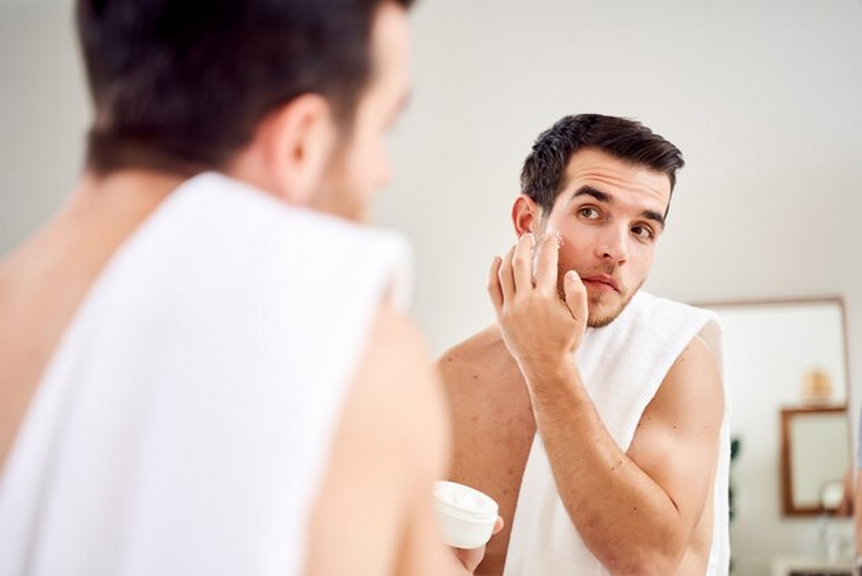
The skin and hair follicles rely on enough hydration just as much as the rest of your body does for good health. Several factors, including beard development, benefit from maintaining a healthy level of hydration in the body.
- Nourishing Hair Follicles: Hair growth, including beard growth, starts at the hair follicles. Proper hydration ensures that these follicles receive the necessary nutrients, oxygen, and hormones for healthy growth;
- Moisturizing the Skin: The facial skin is as essential as the beard itself. Beard dandruff (beardruff) is a result of dry, itchy, flaky skin caused by dehydration. Beard growth is promoted and these common problems are avoided when the skin is properly hydrated;
- Preventing Hair Breakage: Beard hair is more likely to break if it is dry and fragile. Beard hair is less likely to break if it is well hydrated and remains smooth and pliable.
Let’s get down to the specifics of how to keep yourself hydrated to help your beard grow.
Tips for Staying Hydrated
| Hydration Tips | Description |
| Drink Plenty of Water | Drinking enough water throughout the day is the simplest strategy to maintain hydration. Eight to ten glasses (64 to 80 ounces) of water is the recommended daily intake. Adapt your diet to your physical needs and the weather conditions. |
| Limit Caffeine and Alcohol | Both caffeine and alcohol are diuretics, meaning they increase the amount of water your body flushes out. You shouldn’t feel like you have to cut them out totally, but moderation is crucial. |
| Eat Hydrating Foods | Eat more fruits and vegetables (lettuce, celery, and lettuce) and fruits (watermelon, cucumbers) that are high in water content. You can increase the amount of water you absorb from these foods. |
| Use a Humidifier | Humidifiers are useful year-round, but especially in dry climates and during the colder months when indoor heating systems can dry out the air. This can help keep your skin and beard at a healthy level of hydration. |
| Skincare Routine | Get a beard oil or balm to keep your facial hair moisturized and start a regular beard care practice. These items not only make your beard more manageable, but they help hydrate the skin beneath it. |
| Avoid Hot Showers | The natural oils in your skin and beard can be washed away by using hot water. When taking a shower or washing your beard, use lukewarm water. |
The Role of Grooming Tools
The proper beard grooming products are essential for keeping a beard in good condition. Whether you want a short, clean beard or a long, luxuriant one, good grooming products are money well spent. Let’s talk about the essential beard care items you should have, why you need them, and how to utilize them properly.
Beard Brush
The beard brush is an essential part of any beard grooming routine. It features a handle for convenience and is often constructed of natural or synthetic bristles. You need a beard brush for these reasons:
Benefits of Using a Beard Brush:
- Distribution of Natural Oils: The bristles of a beard brush are great for dispersing the sebum (your skin’s natural oil) throughout your beard. This helps keep hair from becoming dry and brittle, which in turn makes it look healthier and brighter;
- Exfoliation: When you brush your beard, you’re actually exfoliating the skin underneath, which helps keep dirt and debris from accumulating;
- Styling: A beard brush can help you shape your facial hair so that it grows in the direction you choose;
- Detangling: It eases irritation caused by tangled facial hair and makes maintenance a breeze.
How to Use a Beard Brush:
- Start from the Roots: To properly brush your beard, start at the skin and work your way to the ends. This guarantees a consistent distribution of the beneficial oils found in nature;
- Brush in the Direction of Growth: Move the brush in the same direction as your beard’s growth. As a result, the hairs are better able to be trained and controlled;
- Repeat as Needed: You should brush your beard everyday, or as often as you see necessary, depending on its length and thickness.
Beard Comb
In addition to a beard brush, a beard comb is an indispensable part of any gentleman’s grooming kit. It can be used to detangle and style your beard and is often constructed of wood, plastic, or metal. You need a beard comb for the following reasons:
Benefits of Using a Beard Comb:
- Detangling: Beard combs are made to untangle your beard without pulling or breaking the hair;
- Fuller Appearance: By separating and fluffing the hairs, combing your beard can give the impression that it is fuller and thicker;
- Product Distribution: You can get better results from your beard oil, balm, or other grooming products if you apply them with a comb;
- Precision Styling: You may control the look of your beard’s shape and length with the help of a beard comb.
How to Use a Beard Comb:
- Start at the Tips: Start at the ends and work your way up to the roots as you comb your beard. This aids in untangling without causing pain;
- Comb in the Desired Direction: Comb your beard in the same direction that it grows, just as you would with a beard brush. Doing so will get you closer to your ideal look;
- Regular Maintenance: To maintain a neat and tidy beard, make combing part of your regular practice.
Beard Growth Serums and Treatments
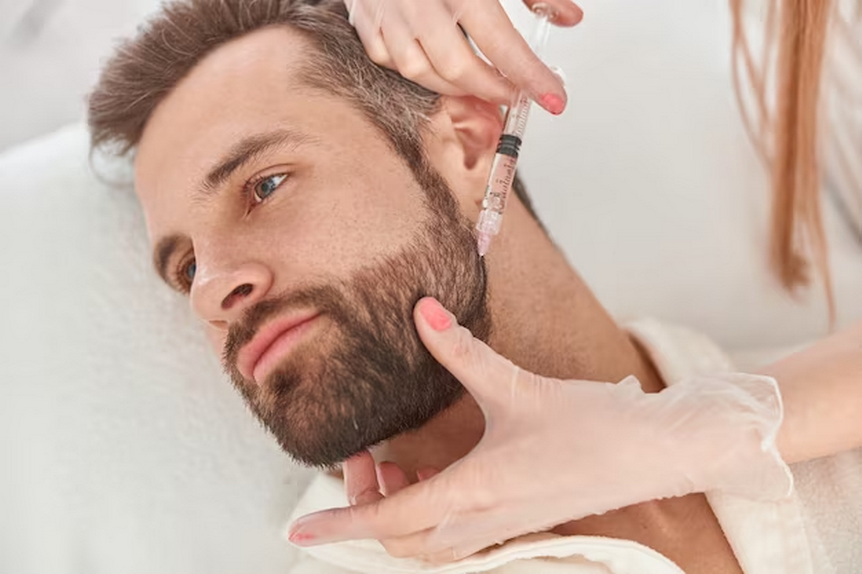
Some people have trouble growing a full, lush beard for a variety of reasons, including genetics, age, and environmental variables. Luckily, you can make your beard grow thicker and fuller with the help of beard growth serums and treatments. Let’s explore the topic of beard growth serums and treatments by looking at the substances used, how well they work, and whether or not they pose any health risks.
Growth Serums
Beard growth serums are topical treatments comprised of various substances designed to stimulate the expansion of facial hair. Most commonly, these items are liquids or oils meant to be applied straight to the beard. Let’s discuss some of the most typical components of growth serums, as well as their possible advantages.
Key Ingredients in Beard Growth Serums
| Ingredient | Function | Benefits |
| Peptides | Stimulate hair follicles and promote hair growth | Encourages thicker and denser beard growth |
| Biotin | Strengthens hair and prevents breakage | Reduces beard hair loss and promotes thickness |
| Castor Oil | Nourishes hair follicles and moisturizes the skin | Supports healthier beard growth and reduces dryness |
| Minoxidil | Increases blood flow to hair follicles | Known to promote beard growth, but requires caution |
| Saw Palmetto | DHT blocker (hormone associated with hair loss) | May prevent beard hair thinning |
| Niacinamide | Improves blood circulation and skin health | Supports a healthy environment for beard growth |
| Vitamin E | Antioxidant that promotes hair and skin health | Reduces beard hair damage and encourages growth |
How to Use Beard Growth Serums
- Consult with a Dermatologist: Before incorporating any beard growth serum into your routine, it’s crucial to consult with a dermatologist. They can assess your skin and hair type, as well as any underlying issues that may affect beard growth. This step is essential to ensure that the product is safe and suitable for your specific needs;
- Patch Test: Perform a patch test by applying a small amount of the serum to a discrete area of your skin, like your forearm. Wait 24 hours to check for any adverse reactions, such as redness, itching, or irritation. If no negative reactions occur, you can proceed with using the product on your beard;
- Cleanse and Exfoliate: Before applying the serum, cleanse your face thoroughly to remove any dirt or oil that may block hair follicles. Exfoliating the skin can also help promote better absorption of the serum’s active ingredients;
- Application: Follow the product’s instructions for application. Typically, you’ll apply a few drops of the serum to your fingertips and then massage it into your beard and the skin beneath it. Make sure to distribute the serum evenly;
- Consistency: Most beard growth serums require consistent use, usually once or twice a day. Be patient, as it may take several weeks or even months to see noticeable results.
Safety Considerations
While beard growth serums can be effective, it’s essential to prioritize safety throughout your beard growth journey. Here are some safety considerations to keep in mind:
- Consultation: Always consult with a dermatologist or healthcare professional before starting any new beard growth treatment to ensure it’s safe for you, especially if you have underlying skin conditions or allergies;
- Allergies: Be aware of potential allergic reactions to ingredients in the serum. Perform a patch test as mentioned earlier and discontinue use if you experience any adverse reactions;
- Follow Instructions: Adhere to the product’s recommended usage instructions. Using too much or too often may not yield faster results and could lead to adverse effects;
- Side Effects: Be aware of potential side effects such as skin irritation, redness, or dryness. If these occur, discontinue use and consult a healthcare professional;
- Patience: Beard growth takes time. Don’t expect immediate results. Be patient and consistent in your application for the best chance of success.
Common Myths About How to Make Beard Thicker
- Shaving Often Makes It Thicker: This is a popular misconception. Many believe that frequent shaving will make their beard grow back denser. In reality, shaving only trims the hair at the surface of the skin, having no impact on the hair follicles beneath, which are responsible for growth. When stubble grows back, it may feel coarser, leading to the illusion of increased thickness, but it’s just a temporary sensation;
- All Men Can Grow Thick Beards: Genetics plays a significant role in beard growth. It’s a widespread belief that every man, given enough time, can cultivate a lush, thick beard. Unfortunately, this isn’t true. While factors like diet, lifestyle, and overall health can influence beard growth to an extent, genetic predisposition remains paramount. Some men might naturally have a thinner beard, and that’s perfectly okay.
Conclusion
Now that you’re armed with the knowledge of how to make your beard grow thicker, it’s time to embark on your journey to achieve a fuller, more robust beard. Remember, consistency is key, and with the right care and attention, your beard will be the envy of many.
FAQs
Q: How long does it typically take to see results when trying to make my beard thicker?
A: Everyone’s beard growth rate is different, but with consistent care and following the tips above, most individuals can see noticeable improvements within a few months.
Q: Are there any side effects to beard growth serums or treatments?
A: Some people might experience skin irritation or allergic reactions to certain ingredients. It’s always best to do a patch test first or consult a dermatologist.
Q: How often should I trim my beard when aiming for a thicker look?
A: It’s recommended to trim every few weeks, focusing on maintaining a uniform length and getting rid of any split ends.

